#planthealth
Text
Problems of Pussy Willow
Pussy willows are prone to several problems that are caused by various fungi and insects.
Weak wood can cause breaks in storms, and powdery mildew can be identified by a white powder on the leaves. Rust causes yellowish spots with dark pustules on leaf undersides, and leaf spot disease causes leaves to turn brown and fall prematurely.
Treatment options include removing and destroying fallen leaves, pruning affected branches, and using copper fungicide.
More about Pussy Willows here
📸 Flicker : janetbland
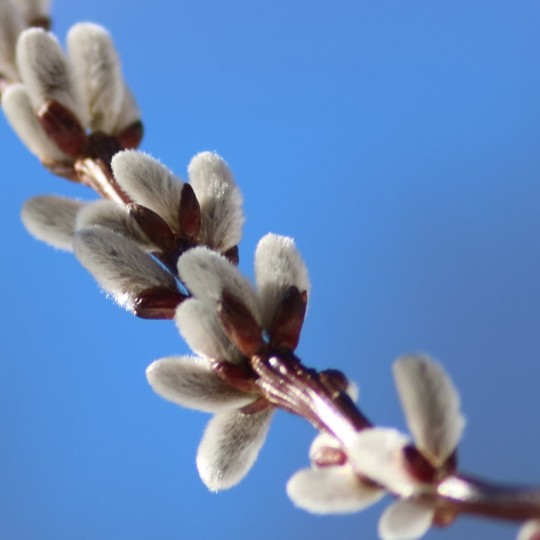
#gardening#plantcare#willowtree#pussywillow#powderymildew#fungal-disease#leavespot#rustdisease#plantproblems#plantdiseases#gardeningtips#gardenmaintenance#planthealth#gardeningadvice
2 notes
·
View notes
Text
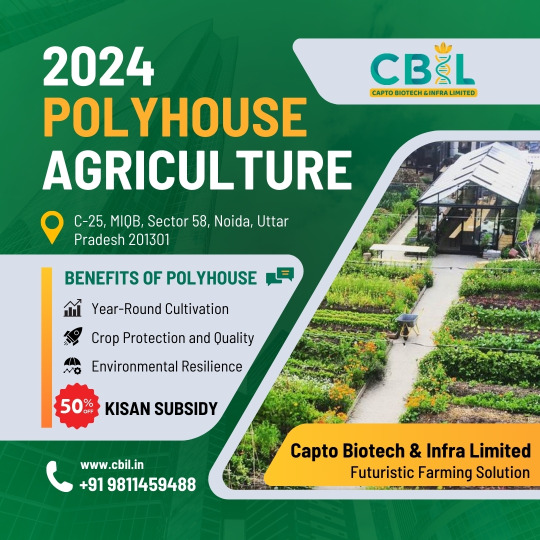
50% भारत सरकार की छूट के साथ किसानों को मिलेगा पॉलीहॉउस फार्मिंग करने का सुनहरा मौका
CaptoBiotech की मद्दत से आज ही रजिस्ट्रेशन करें
संपर्क बनायें : +91 9811459488
#vegetables#farming#greenhouse#polyhouse#agriculture#agricultureandfarming#kisan#Agrowon#farmers#khetibadi#flower#PlantHealth#plantbreeding#watermelon#agriculturelife#grapesfarming#grapesfromindia#banana#litchyplants#fruits#shetkari#shetkariputra#shetkaribusiness
0 notes
Text
Irrigation at Gardner Landscape Design
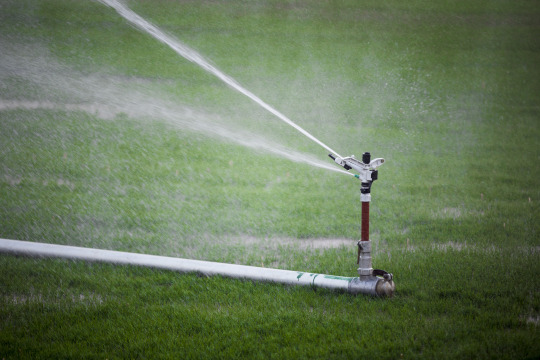
Irrigation plays a crucial role in maintaining the health and beauty of landscapes, and at Gardner Landscape Design, we understand the importance of efficient watering systems. One method that stands out for its effectiveness is drip irrigation.
Drip irrigation is a system where water is delivered directly to the base of plants through a network of tubing and emitters. This method ensures that water reaches the roots where it's needed most, promoting healthy growth while minimizing water wastage.
At Gardner Landscape Design, we specialize in designing and installing custom drip irrigation systems tailored to the specific needs of each garden or outdoor space. Whether it's for residential gardens or commercial properties, drip irrigation offers a sustainable solution that conserves water and promotes plant health.
In addition to drip irrigation, we also offer expertise in other forms of irrigation systems such as Rainbird irrigation for larger areas or specialized needs. Our goal is to provide our clients with efficient and effective watering solutions that enhance the beauty and longevity of their landscapes.
When it comes to nasal irrigation - a practice often used for personal health benefits - we recommend consulting with medical professionals or specialists who can provide guidance on proper techniques and tools for this purpose.
Trust Gardner Landscape Design for all your irrigation needs, from drip systems to specialized solutions like Rainbird. Let us help you create a lush, vibrant landscape that thrives with the right watering strategy in place.
#Irrigation#WateringSystem#GardenIrrigation#LandscapeWatering#DripIrrigation#SprinklerSystem#WaterManagement#SmartIrrigation#AutomaticWatering#GardenCare#GreenThumb#OutdoorLiving#LawnCare#PlantHealth#GardenDesign#Landscaping#WaterConservation#EfficientWatering#HomeGarden#HealthyPlants#GardeningTips#IrrigationSystem#DroughtResistant#WaterEfficiency#GardenMaintenance#SustainableGardening#GardenLife#UrbanGardening#GrowYourOwn#WateringSolutions
1 note
·
View note
Text
Introduction
Hydroponic Crop Steering has emerged as a game-changer in the field of agriculture, revolutionizing the way we grow plants. With its numerous benefits, hydroponics has gained significant attention in recent years. This innovative farming method involves cultivating plants in a nutrient-rich water solution, without the need for soil. By providing precise control over environmental conditions, hydroponics offers higher yields, faster growth rates, and the ability to grow crops year-round. Additionally, hydroponic systems conserve water by recycling it and require less land space compared to traditional farming methods. In this guide, we will explore the various benefits of hydroponics and how it is transforming the agriculture industry.
Overview of hydroponic crop steering and its benefits
A bowl of Hydroponic plants with a light shining on them.
Hydroponic crop steering is a plant growth management practice that involves manipulating the environment, such as light, climate, and irrigation, to encourage plants to grow in a certain way.
By strategically adjusting these factors, growers can achieve increased crop performance, improved crop quality, and manipulate yields. Crop steering allows for precise control over plant growth and development, resulting in healthier and more productive plants.
It also minimizes the risk of nutrient deficiencies and optimizes nutrient uptake. Additionally, crop steering promotes efficient resource usage and reduces the environmental impact of farming practices. Overall, adopting hydroponic crop steering techniques offers numerous benefits for growers seeking to maximize the health and performance of their plants.
History and development of hydroponic systems and crop steering techniques
Four green dahlias on a black background, enhanced with hydroponic techniques.
Hydroponics has a long and fascinating history. The concept of growing plants without soil dates back to ancient civilizations such as the Hanging Gardens of Babylon. In the 17th century, European scientists began experimenting with water culture systems.
However, hydroponic systems didn't gain significant attention until the 1930s when agricultural scientists developed the nutrient film technique (NFT). This breakthrough allowed for the continuous flow of nutrient-rich water to plants' roots.
Over the years, advancements in technology and research have led to the development of various hydroponic systems, such as deep water culture (DWC) and aeroponics. As the understanding of plant physiology and the importance of nutrient control grew, the concept of crop steering emerged.
Today, hydroponic crop steering techniques involve precise manipulation of environmental factors, leading to improved plant growth, increased yields, and enhanced crop quality.
Understanding Hydroponic Crop Steering
A hydroponic potted plant thriving under a grow light.
Hydroponic crop steering is a method used to manipulate environmental factors and control plant growth and development for optimal performance in hydroponic systems. By adjusting factors such as temperature, light intensity, and nutrient ratios, growers can steer plants towards desired outcomes, such as increased crop performance, improved crop quality, and manipulated yields. It involves closely monitoring and adjusting these factors at different stages of plant growth to achieve the desired results. Crop steering requires a deep understanding of plant physiology and the ability to identify and address nutrient deficiencies or imbalances. By implementing this technique, hydroponic growers can maximize their plant's potential and achieve higher yields.
Explanation of crop steering and its principles
The Benefits of Adopting Hydroponic Crop Steering
Crop steering is a method used in hydroponic systems to manipulate environmental factors and control plant growth for optimal performance. The principles of crop steering involve closely
monitoring and adjusting factors such as temperature, light intensity, and nutrient ratios at different stages of plant growth.
This allows growers to steer plants towards desired outcomes, such as increased crop performance, improved crop quality, and manipulated yields. By closely managing these factors, growers can create the ideal conditions for plant growth and development, ensuring that plants receive the necessary resources and support to reach their full potential.
Crop steering is based on a thorough understanding of plant physiology and the ability to identify and address nutrient deficiencies or imbalances, and it requires a proactive approach to environmental management.
Importance of controlling plant growth and development for optimal performance
A blue flower with green leaves on a black background, grown using hydroponic methods.
Controlling plant growth and development is crucial for achieving optimal performance in hydroponic systems. By manipulating environmental factors such as temperature, light intensity, and nutrient ratios, growers can guide plants towards desired outcomes. This level of control allows for precise adjustments to meet the specific needs of each plant, promoting healthy growth and maximizing productivity. Proper management of plant growth and development ensures that plants receive the necessary resources at the right stages, reducing the risk of nutrient deficiencies, diseases, or stunted growth. It ultimately leads to improved crop quality, increased yields, and overall success in hydroponic gardening.
Environmental Factors and Their Impact
A green field with spotlights on it, utilizing hydroponic crop steering techniques.
Environmental factors play a crucial role in hydroponic crop steering and have a significant impact on plant growth and development. Temperature and light intensity manipulation are two essential factors that can be controlled to enhance plant growth and improve yields. By optimizing temperature levels and adjusting light intensity, growers can create the ideal growing conditions for their plants. Additionally, managing humidity levels and airflow within the growing environment is also important to prevent the onset of diseases and promote healthy plant growth. By carefully controlling these environmental factors, hydroponic growers can achieve optimal plant performance and maximize their crop yields.
Role of environmental factors in crop steering
A yellow flower on a black background.
Environmental factors play a crucial role in crop steering and have a significant impact on plant growth and development. Temperature and light intensity manipulation are two essential factors that can be controlled to enhance plant growth and improve yields. By optimizing temperature levels and adjusting light intensity, growers can create the ideal growing conditions for their plants. Additionally, managing humidity levels and airflow within the growing environment is also important to prevent the onset of diseases and promote healthy plant growth. By carefully controlling these environmental factors, hydroponic growers can achieve optimal plant performance and maximize their crop yields.
Temperature and light intensity manipulation for plant growth and yield enhancement
A close up of some green leaves on a black background showcasing hydroponic farming techniques for crop steering.
In crop steering, temperature and light intensity have a significant impact on plant growth and yield enhancement. By manipulating these environmental factors, growers can create the ideal conditions for their plants.
Temperature control is crucial for optimizing plant development. Different stages of plant growth require specific temperature ranges, and maintaining these ranges can promote healthy growth and prevent stress. Additionally, adjusting the light intensity is essential for maximizing photosynthesis and promoting foliage growth. Proper lighting levels can also influence hormone production, flowering, and fruit development.
By carefully monitoring and adjusting temperature and light intensity, growers can enhance plant health, productivity, and overall yield.
Nutrient Management for Plant Health
A hydroponic green bowl with herbs in it on a table.
To ensure optimal plant health, proper nutrient management is essential in hydroponic crop steering. By optimizing nutrient availability and uptake, growers can support robust growth and minimize nutrient deficiencies. Balancing nutrient ratios is crucial to prevent imbalances and promote healthy plant development. This involves adjusting the nutrient solution based on plant growth stages and monitoring nutrient levels regularly. Additionally, implementing a comprehensive nutrient management plan, including regular testing and adjustments, can help maintain the ideal nutrient balance for plants. By effectively managing nutrients, hydroponic growers can maximize plant health, yield, and overall crop performance.
Optimizing nutrient availability and uptake through crop steering
A hydroponic plant growing in the water of a pool.
Optimizing nutrient availability and uptake is a key component of successful hydroponic crop steering. By adjusting nutrient levels and ratios based on plant growth stages, growers can ensure that plants receive the optimal balance of nutrients throughout their life cycle. This involves monitoring nutrient levels regularly and making necessary adjustments to the nutrient solution. By fine-tuning the nutrient solution, growers can promote healthy plant development, minimize nutrient deficiencies, and enhance overall plant health and performance. Additionally, by providing the right nutrients at the right time, crop steering can maximize nutrient uptake and utilization, leading to higher yields and improved crop quality.
Balancing nutrient ratios to improve plant health and reduce nutrient deficiencies
A close up of a green leaf with the sun shining on it in a hydroponic system.
Balancing nutrient ratios is a critical aspect of hydroponic crop steering that can significantly enhance plant health and minimize nutrient deficiencies. By providing plants with the optimal balance of essential nutrients, growers can ensure that they receive the necessary elements for healthy growth and development.
This involves carefully monitoring the nutrient solution and adjusting the ratios of nitrogen, phosphorus, and potassium, as well as trace elements, based on plant growth stages and specific needs.
By maintaining a balanced nutrient profile, growers can promote stronger root development, improved flowering and fruiting, increased resistance to diseases and pests, and overall higher crop yields. It is essential to regularly test and adjust the nutrient solution to prevent excesses or deficiencies, ensuring optimal nutrient uptake and utilization by the plants.
Water Management and Irrigation Strategies
A hydroponic plant in a pot on a wooden table.
Water management and irrigation strategies play a critical role in hydroponic crop steering. Efficient water usage and proper irrigation techniques are essential for maintaining optimal plant health and growth. This involves determining the appropriate water volume and frequency based on the plant's growth stage and the size of the growing medium. Coco coir, for example, requires more frequent watering compared to other growing mediums. Additionally, managing water availability and distribution throughout the growing system helps ensure that all plants receive sufficient moisture and nutrients. By implementing efficient water management and irrigation strategies, growers can support healthy plant growth and maximize crop yields.
Efficient water usage and irrigation techniques for hydroponic systems
A hydroponic greenhouse filled with potted plants.
Efficient water usage is crucial for hydroponic systems to optimize plant growth and minimize waste. Implementing proper irrigation techniques ensures that plants receive the right amount of water at the right time.
This can be achieved by using irrigation systems such as drip irrigation or nutrient film technique, which deliver water directly to the plant roots. Additionally, monitoring and controlling water pH levels can help prevent nutrient imbalances and ensure efficient nutrient uptake. By carefully managing water availability and distribution, hydroponic growers can not only conserve water but also support healthy plant growth and maximize crop yields.
Managing water availability and distribution to support healthy plant growth
A hydroponic plant with large leaves on a dark background, utilizing crop steering techniques.
In hydroponic systems, ensuring the right amount of water is available to plants is essential for their healthy growth. Efficient water management techniques can help optimize nutrient uptake and prevent water-related issues such as root rot. One method is to use automated irrigation systems, such as drip irrigation or nutrient film technique, which deliver water directly to the plant roots. Monitoring and controlling water pH levels is also crucial to prevent nutrient imbalances. Additionally, the use of water sensors and timers can help regulate water distribution and avoid over or under-watering. By carefully managing water availability and distribution, hydroponic growers can support healthy plant growth and maximize crop yields.
Case Studies and Success Stories
A hydroponic field of green plants with a light shining on them, demonstrating effective crop steering techniques.
In this section, we will explore some real-life examples of hydroponic growers who have successfully adopted crop steering techniques. These case studies demonstrate the benefits and outcomes achieved through implementing hydroponic crop steering.
Greenhouse Grower X: By carefully manipulating temperature and light intensity, this grower was able to significantly increase both the yield and quality of their crops. Through precise crop steering, they achieved healthier and more robust plants, leading to higher market value and customer satisfaction.
Urban Vertical Farm Y: This innovative urban farming operation utilized crop steering to optimize nutrient delivery and manage plant growth stages. As a result, they experienced improved productivity and consistency in their harvests, proving the effectiveness of crop steering in maximizing yields in limited indoor spaces.
These success stories highlight the potential of hydroponic crop steering in boosting plant health, performance, and overall farm profitability.
Real-life examples of hydroponic growers adopting crop steering techniques
A hydroponic system with a large screen featuring a stunning waterfall surrounded by lush plants.
Real-life examples of hydroponic growers adopting crop steering techniques illustrate the practical application and benefits of this approach. One such example is Greenhouse Grower X, who successfully increased both the yield and quality of their crops by carefully manipulating temperature and light intensity. Through precise crop steering, they achieved healthier and more robust plants, leading to higher market value and customer satisfaction.
Another example is Urban Vertical Farm Y, an innovative urban farming operation that utilized crop steering to optimize nutrient delivery and manage plant growth stages. As a result, they experienced improved productivity and consistency in their harvests, proving the effectiveness of crop steering in maximizing yields in limited indoor spaces. These success stories highlight the potential of hydroponic crop steering in boosting plant health, performance and overall farm profitability.
Benefits and outcomes achieved through implementing hydroponic crop steering
A view of a hydroponic field from a car window, showcasing innovative crop steering techniques.
Implementing hydroponic crop steering can yield several benefits and outcomes for growers. By carefully manipulating environmental
factors such as temperature, light intensity, and nutrient availability, growers can enhance plant health and performance.
The use of crop steering techniques can result in increased crop yields, improved crop quality, and more consistent harvests. Additionally, crop steering allows growers to have better control over plant growth stages and optimize nutrient delivery, leading to healthier and more robust plants.
By adopting hydroponic crop steering, growers can maximize their farm profitability and promote sustainable and efficient farming practices.
Conclusion
A line of hydroponic potted plants in a greenhouse.
In conclusion, adopting hydroponic crop steering techniques can bring numerous benefits and outcomes for growers. By carefully controlling environmental factors such as temperature, light intensity, and nutrient availability, growers can enhance plant health and performance.
This can lead to increased crop yields, improved crop quality, and more consistent harvests. Additionally, crop steering allows for better control over plant growth stages and optimized nutrient delivery, resulting in healthier and more robust plants.
By embracing hydroponic crop steering, growers can maximize farm profitability and contribute to sustainable and efficient farming practices. It is an innovative approach that offers great potential for the future of hydroponic gardening.
Summary of the benefits of adopting hydroponic crop steering
A hydroponic green house with plants using the crop steering technique, located in the middle of a room.
Hydroponic crop steering offers numerous benefits for growers. By carefully controlling environmental factors and nutrient availability, growers can maximize plant health and performance. This leads to increased crop yields, improved crop quality, and more consistent harvests. Crop steering also allows for better control over plant growth stages and optimized nutrient delivery, resulting in healthier and more robust plants. Additionally, hydroponic crop steering promotes sustainable and efficient farming practices by reducing water usage and the need for chemical inputs. Overall, adopting hydroponic crop steering techniques can lead to higher profitability and contribute to a more sustainable future for agriculture.
Promotion of sustainable and efficient farming practices
The adoption of hydroponic crop steering techniques not only enhances plant health and performance but also promotes sustainable and efficient farming practices. Hydroponic systems require significantly less water compared to traditional soil-based agriculture, reducing water usage and minimizing the strain on freshwater resources. Additionally, by controlling nutrient delivery and optimizing the root zone environment, growers can reduce the need for chemical inputs, minimizing the environmental impact of farming operations. The precise control over growth conditions also contributes to efficient nutrient uptake, ensuring that plants receive the right amount of nutrients at the right time. By embracing hydroponic crop steering, growers can contribute to a more sustainable future for agriculture.
Valuable information on hydroponics and sustainable farming:
Hydroponics at Home | Extension (University of New Hampshire): This resource offers practical advice for setting up a home hydroponic system. It covers aspects such as nutrient solution management, light requirements, and the importance of carbon dioxide and oxygen for plant growth. Various types of small-scale hydroponic systems suitable for home use, including potting medium and container systems, nutrient film technique (NFT), raft systems, and microgreens trays, are also described. Additionally, the guide touches on the environmental considerations of disposing used nutrient solutions and emphasizes the importance of aeration in hydroponic systems【36†source】.
Hydroponics Systems: Nutrient Solution Programs and Recipes (Penn State
Extension): This article focuses on the importance of nutrient solutions in hydroponic systems. It discusses different approaches to creating nutrient solutions, such as fertilizer programs and nutrient solution recipes. The advantages and disadvantages of each approach are highlighted, providing a comprehensive understanding of how to manage nutrient solutions effectively for hydroponic farming. This resource is particularly useful for those looking to optimize their hydroponic systems for better plant growth and yield【37†source】.
Greenhouse & Floriculture: Hydroponic Greenhouse Production Resources (University of Massachusetts Amherst): This resource provides an overview of hydroponic greenhouse production. It addresses key factors to consider before investing in hydroponics, such as the costs of setting up systems, energy requirements, and the need for technical skills. The guide also suggests resources for learning more about hydroponics, including books, videos, and other educational materials. For those interested in starting a hydroponic greenhouse, this resource offers practical insights and considerations for effective planning and implementation【38†source】.
Each of these resources offers unique insights and practical guidance for anyone interested in exploring hydroponics, whether at home or in a more commercial setting. They cover a range of topics from nutrient management and system types to the overall considerations for starting a hydroponic greenhouse.
0 notes
Text
Mastering the Art of White Fly Warfare: Your Ultimate Guide to a Pest-Free Garden!
🌿 Say goodbye to white fly invasions! Learn the secrets of pest-free gardening with our ultimate guide. 🚫🦟
#GardenTips#PestControl#GreenThumb#GardenCare#WhiteFlySolutions#PestFreeGarden#GreenLiving#PlantHealth#GardeningGuide#NaturalPestControl
0 notes
Text
LIQUID SEAWEED FERTILIZER | MANUFACTURER & EXPORTER - PEPTECH BIO
Liquid seaweed fertilizer is an organic fertilizer derived from seaweed or algae, known for its richness in essential nutrients and bioactive compounds. It promotes plant growth, regulates stress resistance, and improves soil structure. With biostimulant properties, it enhances nutrient uptake and root development. Suitable for organic farming, it can be applied foliarly, providing quick nutrient absorption. Regular use is associated with increased crop yields, improved fruit quality, and disease resistance. Follow manufacturer recommendations for application rates and frequency to maximize its benefits across various crops.
Maximize Growth Potential with Peptech’s Liquid Seaweed Fertilizer — Your Path to Lush and Healthy Gardens! Explore our Innovative Solutions at Peptech’s Website for Sustainable Agriculture.
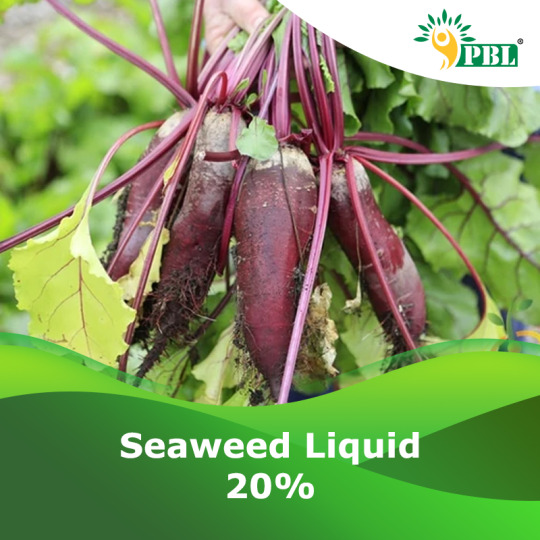
0 notes
Text
Bacillus Subtilis Manufacturers
Description: Bacillus Subtilis Manufacturers
A Potent bio fungicide and Plant Growth Promoting Rhizobacteria (PGPR) .
Safeguards plants by forming a protective shield on roots, hindering spore germination in plant pathogens, and outcompeting soil microbes.
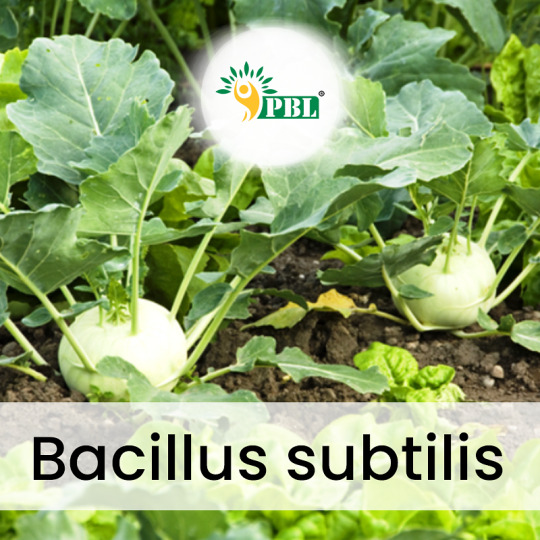
Disease Prevention:
Inhibits pathogen attachment, colonizes roots, and prevents soil-borne and foliar diseases.
Nutrient Enhancement:
Improves nitrogen fixation, solubilizes soil phosphorus, and produces siderophores for robust plant growth.
Secondary Metabolites:
Induces the production of plant secondary metabolites, regulates phytohormones, and enhances stress tolerance.
Competitive Effects:
Outcompetes pathogens through nutritional and spatial locus competition in the rhizosphere.
Antibacterial Materials:
Deploys subtilin, organic acids, and antibacterial proteins to inhibit pathogenic bacteria, enhancing disease resistance.

PEPTECH BIOSCIENCES LTD
+91-11-71239900
909, 9th Floor, Bigjos Tower,
Netaji Subhash Place ,New Delhi -110034
0 notes
Text
Gardening products from Garden Genie (Neem Oil & Leafy Grow)
Garden Genie’s Neem Oil
100% Cold Pressed & Organic product extracted out of Neem tree fruits and kernels which helps in plants growth & fertility.
Leafy Grow is an All-in-One spray bottle 🌱 For all indoor & outdoor leafy plants & greens. It contains 16 Essential Nutrients (both Macro & Micro) for the overall development & growth requirement of the plant.
0 notes
Text
Identifying and Addressing the Causes of Aphids in Your Garden
Aphids tend to attack weakened plants that are already experiencing some level of stress. Therefore, it is important to identify the source of the plant's stress to prevent aphid infestations.
Some common causes of plant stress include insufficient sunlight or water, unsuitable plants for the environment, excessive fertilizer use, and pruning. The use of pesticides can also contribute to aphid problems by killing off their natural predators.
Home landscapes that host a diversity of plants and wildlife usually have a balance of beneficial insects and birds that help control aphid populations.
Read more at Yardener

#plantstress#aphidscontrol#pestmanagement#organicgardening#naturalpredators#beneficialinsects#planthealth#gardeningtips#pestcontrol#plantcare#homegardening#ecofriendly#sustainableliving#healthyplants#greenthumb#backyardgarden#greenliving#organicpestcontrol#nontoxicpestcontrol#savethebees#ecogardening#gardening tumblr
0 notes
Photo

Are your plants🌿showing worrying signs poor health? 🤒 Did you know NOT all plant health issues are caused by pests or diseases.🐛 Other factors to consider are nutrient imbalances and offset watering💧 schedules that can also cause significant issues. At our store our technicians are super friendly😃 and now how to spot the issues fast by just you bringing in a picture of your plant alone! 🤳🪴 Come on down to you High Desert Hydroponic H.Q we would love to help! 🤜🤛💚 #Hydroponics #growtents #plantsandpuppies #planthealth #plants #indoorgrowing #outdoorgrowing #gardening #plantnutrients #followus (at Phelan Hydro & Garden Supply) https://www.instagram.com/p/Cj24mpLLnZ2/?igshid=NGJjMDIxMWI=
#hydroponics#growtents#plantsandpuppies#planthealth#plants#indoorgrowing#outdoorgrowing#gardening#plantnutrients#followus
0 notes
Photo

Karanja Cake now on sale! #organicveggies #organicweed #outdoor #peppers #perlite #phosphorus #photography #pist #plantbased #plantextract #planthealth #plantlife #plantmom #plantnurtinents #plants https://www.instagram.com/p/CiVUSTqOd4d/?igshid=NGJjMDIxMWI=
#organicveggies#organicweed#outdoor#peppers#perlite#phosphorus#photography#pist#plantbased#plantextract#planthealth#plantlife#plantmom#plantnurtinents#plants
0 notes
Text

@considernature submitted: The Japanese Beetle (Popilla japonica) is a beautiful scarab beetle, but sometimes it ends up where it doesn't belong! This beetle is an invasive species in the United States, known to feed on over 300 ornamental or agricultural plants. This *particular* Japanese beetle has decided to munch on my eggplant leaves. Where's a mantis when you need one?!
Image source: My garden!
Info source: https://www.aphis.usda.gov/aphis/ourfocus/planthealth/plant-pest-and-disease-programs/pests-and-diseases/japanese-beetle/japanese-beetle.
Yes they have really taken over the eastern half of the US! But they're here to stay now, so I guess we'd better get used to them. At least they're pretty :)
45 notes
·
View notes
Text

Are your cannabis plant leaves turning yellow? Decode the mystery fast with this informative YouTube short. Get insights and solutions for healthier plants! #CannabisCare #PlantHealth #Shorts
0 notes
Text

Whiteflies, those tiny, seemingly innocuous insects, can wreak havoc on plants, silently posing a significant threat to agricultural crops and garden greenery. These tiny sap-sucking pests, belonging to the aphid family, target the underside of leaves, where they multiply rapidly.
The damage inflicted by whiteflies is multifaceted. Firstly, they drain plants of essential nutrients, causing stunted growth and yellowing leaves. Their feeding weakens the plant's immune system, making it susceptible to diseases. Moreover, whiteflies excrete a sticky substance called honeydew, promoting the growth of sooty mold, further hindering plant photosynthesis.
Beyond the direct damage, whiteflies are notorious vectors of plant viruses, transmitting diseases that can lead to severe crop losses. These resilient pests are challenging to control, requiring integrated pest management strategies that encompass biological controls and organic remedies. In the battle against whiteflies, vigilance and proactive measures are key to safeguarding plant health and ensuring bountiful harvests.
#PlantHealth #WhiteflyControl #GardeningTips #whitefly #ozonebiotech
0 notes
Text
Peptech's Silica Powder: A Growth Boost for Plants!
Peptech Biosciences Ltd. offers a high-quality water-soluble silica powder derived from natural sources. This product enhances nutrient uptake, increases resistance to stress, strengthens cell walls, and optimizes crop yield. Elevate your agricultural practices with Peptech’s innovative solution for plant health. #PlantHealth, #Peptech, #SilicaBoost

0 notes
